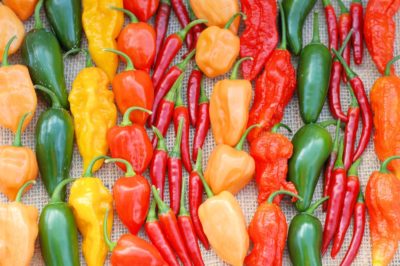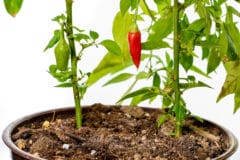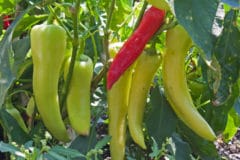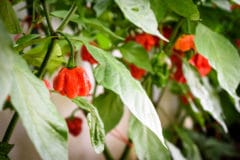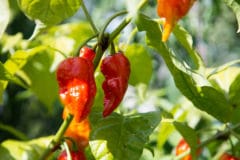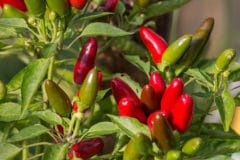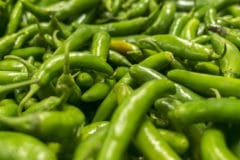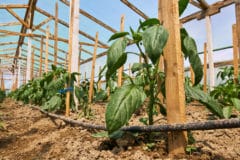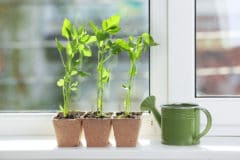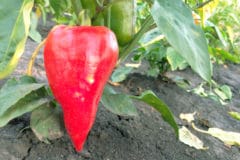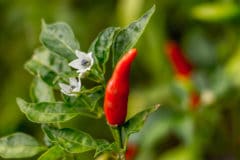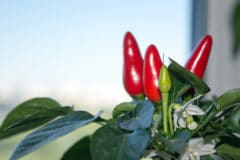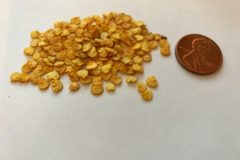Planting
Start hot pepper seeds indoors 8-12 weeks before the last frost in your region. One great method is using soil blocks. This technique saves soil and prevents plants from becoming rootbound while they wait to go into the ground.
Use an all-purpose potting soil, or you can mix your own. Typical ingredients include:
- Coconut Coir
- Perlite
- Screened compost
You can mix these in equal parts to make a standard all-purpose potting soil. The compost isn’t necessary but is helpful if the plant may grow a while in the pot. Keep your seeds in a room or greenhouse that does not get below 60°F (15°C). Ideal germination temperature would be 75°F (23°C).
Transplanting
When seedlings emerge keep them well lit. You can purchase simple fluorescent lights at any hardware store. Hang them so that you can raise them as the plants grow. Additional lighting will develop strong stalks and prevent the plants from stretching out reaching for sunlight.
Transplant hot peppers when the soil temperature has risen consistently above 60°F (15°C). Plants must be acclimated to outdoor conditions before going into the ground. To acclimate them bring them outside for increasing increments of time each day over a couple of weeks.
Start with a half an hour outdoors in dappled light at midday. Increase their exposure to direct light, wind, and temperature fluctuations until they show no signs of stress when left outdoors for 24 hours.
Caring For Plants
Transplant them into a weed-free bed with well-draining soil. Amend the soil with plenty of rich compost to feed the growing plant. There is no need to feed the plant again until it begins to flower and fruit. At this time, you can give it some organic liquid fertilizer like compost tea.
Hot peppers love the heat, but sometimes too much direct sunlight can wilt them. Keep an eye on your plants for signs of stress and do what you can to reduce it. Provide a shade cloth or plant them just north of a tree so they receive dappled light during hot afternoon sun.
Harvest
Harvest hot peppers when they have fully matured and ripened to their final color. With many chilis, the bright red color is a sign of maturity and spiciness. The more fruit you pick, the more the plant will produce so don’t hesitate.
